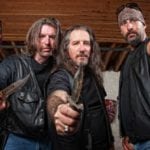 History
History  History
History  Technology
Technology Top 10 Everyday Tech Buzzwords That Hide a Darker Past
 Humans
Humans 10 Everyday Human Behaviors That Are Actually Survival Instincts
 Animals
Animals 10 Animals That Humiliated and Harmed Historical Leaders
 History
History 10 Most Influential Protests in Modern History
 Creepy
Creepy 10 More Representations of Death from Myth, Legend, and Folktale
 Technology
Technology 10 Scientific Breakthroughs of 2025 That’ll Change Everything
 Our World
Our World 10 Ways Icelandic Culture Makes Other Countries Look Boring
 Misconceptions
Misconceptions 10 Common Misconceptions About the Victorian Era
 Mysteries
Mysteries 10 Strange Unexplained Mysteries of 2025
 History
History 10 Things You Didn’t Know About the American National Anthem
 Technology
Technology Top 10 Everyday Tech Buzzwords That Hide a Darker Past
 Humans
Humans 10 Everyday Human Behaviors That Are Actually Survival Instincts
Who's Behind Listverse?

Jamie Frater
Head Editor
Jamie founded Listverse due to an insatiable desire to share fascinating, obscure, and bizarre facts. He has been a guest speaker on numerous national radio and television stations and is a five time published author.
More About Us Animals
Animals 10 Animals That Humiliated and Harmed Historical Leaders
 History
History 10 Most Influential Protests in Modern History
 Creepy
Creepy 10 More Representations of Death from Myth, Legend, and Folktale
 Technology
Technology 10 Scientific Breakthroughs of 2025 That’ll Change Everything
 Our World
Our World 10 Ways Icelandic Culture Makes Other Countries Look Boring
 Misconceptions
Misconceptions 10 Common Misconceptions About the Victorian Era
 Mysteries
Mysteries 10 Strange Unexplained Mysteries of 2025
10 Crazy Outlaw Shootouts
Many Depression-Era outlaws have become part of American folklore, their exploits dramatized in Hollywood movies, their lifestyle all but celebrated. But it’s worth remembering that many of these men (and women) were often not just criminals but also murderers, and the Depression was a pretty dangerous time to be a law enforcement official.
10 Francis ‘Two Gun’ Crowley
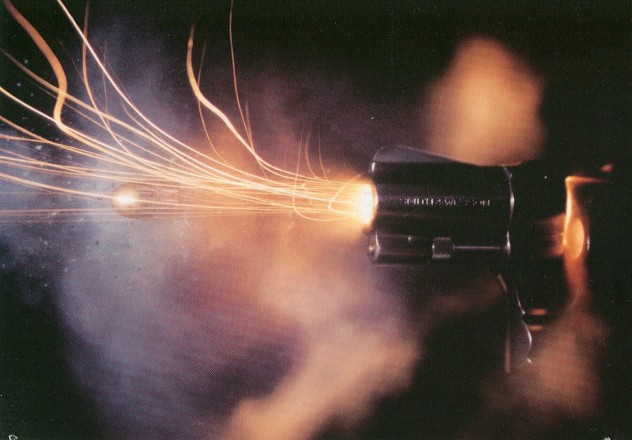
Francis Crowley was a cop killer and a psychopath—one whose short but intense criminal career landed him in the electric chair at the age of 19. Unafraid to sling lead at the coppers, Crowley took part in a pitched 1931 gunfight that inspired the most famous scene in one of the greatest gangster films ever made, 1949’s White Heat.
When Crowley was 13, his brother was killed while exchanging gunfire with a policeman (who also died), which instilled a lifelong hatred of cops in the young boy. Following an early career as a stick-up kid and car thief, Crowley began robbing banks while on the run for shooting and wounding a New York detective. After killing a cop who asked for his identification in a park one night in May 1931, Crowley was tracked to a Bronx apartment which was subsequently besieged, according to some accounts, by hundreds of cops. Shot four times, he was loaded into an ambulance—where two more guns were discovered strapped to his legs. He had intended to escape from the ambulance the only way he knew how: more shooting.
“Two-Gun” Crowley was electrocuted early the next year in Sing Sing, and 2,000 people applied for tickets to watch the execution.
9 Edward J. Adams
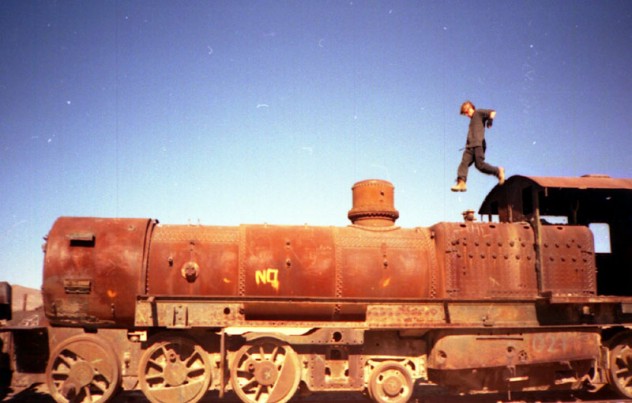
A bootlegger and robber of banks and trains, Eddie Adams graduated to murder in 1920 when he and his partner, John Callahan, attempted to rob a Kansas City gambling den. Caught and sentenced to life for killing a man during the robbery, Adams jumped from the train while being transported to a Missouri prison, only to be recaptured, and escape again six months later. During the next year or so (the last one of his life) he would kill at least half a dozen more people—including three Wichita, Kansas police officers.
Adams’ final shootout occurred on November 23, 1921. While attempting to rent a car, he was recognized by the shop’s owner, who called the police; three officers entered through the backdoor and surprised Adams and almost managed to restrain him before he was able to pull his gun free and shoot one of the officers dead. One of the remaining officers wisely took cover while Adams exchanged gunfire with the third, wounding him. The hidden officer lined up his shot and killed Adams. His body was put on display for the public he had terrorized, and eighteen of Adams’ accomplices were arrested and imprisoned after his death.
8 Buck Barrow
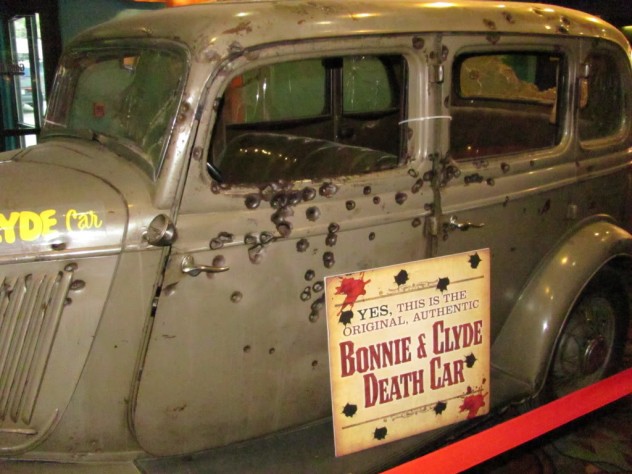
Marvin “Buck” Barrow was a member of the Barrow Gang and the older brother of Clyde Barrow. He, his wife Blanche, and Clyde’s girlfriend (Bonnie Parker) constituted the core of the gang that attracted national attention for their robberies of banks, gas stations, and convenience stores—and for Clyde’s Browning semi-automatic rifle, which he was just as quick to use as the stories say.
Though Bonnie and Clyde’s 1934 ambush by police is iconic (its portrayal in the 1967 Hollywood adaptation remains one of the more shocking illustrations of gun violence in film), a shootout a year earlier may have been the beginning of the end. In July 1933, Bonnie and Clyde, Buck and Blanche, along with their associate W. D. Jones, were engaged by police in Platte City, Missouri twice over a period of five days. Buck and Blanche were captured while the rest of the gang slipped away yet again.
Buck died from his wounds, but Blanche survived to serve six years in prison. She was released and died of cancer in 1988 at the age of 77.
7 Jake Fleagle
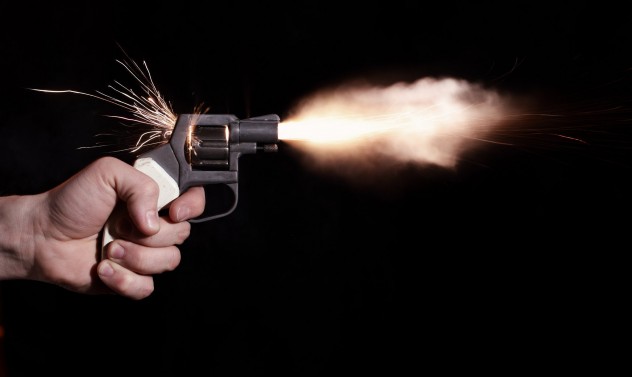
Another band of Prohibition-Era outlaws, the Fleagle gang (brothers Jake and Ralph along with Howard Royston and George Abshire) robbed banks, and lots of them. The gang was active for for over 10 years and is said to have gotten away with over $1 million, which in today’s currency is . . . a lot. After robbing a bank in Lamar, Colorado in 1928, the gang became the first case in which a conviction was based on fingerprint evidence.
The robbery had started going downhill when the bank’s president managed to duck into his office and grab a .45. In the chaos that followed, Howard Royston was shot in the jaw and several bank employees were killed, including the president and his son. They were able to escape to a Kansas farm owned by Jake, but were understandably forced to seek out a doctor for Royston’s wound. The Fleagle brothers went to the home of a local doctor—whom they later killed—with a story about an injured farmhand. It was on the doctor’s car that Jake Fleagle deposited the fingerprint that would nail him. Authorities lifted the print from a stuck window that Jake had forgotten to wipe down. Over a year after the Lamar robbery, Jake was picked up under an alias for a different crime and fingerprinted. He was released, but later suffered a fatal wound during a shootout on a train.
6 Al Brady
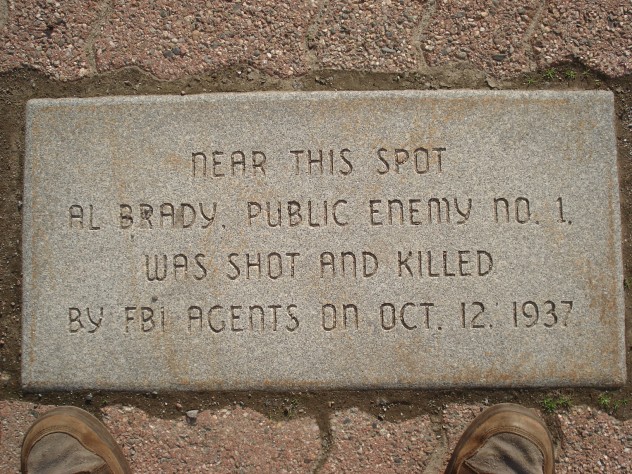
In early 1935, petty criminal Al Brady occasionally visited the Indiana farm of a friend, where he became acquainted with Jim Dalhover, a local moonshiner. In March of that year, Jim’s still was raided and shut down, and after serving 60 days, he was easily convinced by his buddy that bank robbery would be much more lucrative. Over the next couple years, their gang would commit 200 robberies, culminating in the most violent gun battle in the history of Maine. Brady and Dalhover, along with Clarence Shaffer Jr. and Charles Geiseking, were first apprehended after the murder of an Indianapolis policeman and Indiana state trooper in 1936. All but Geisking escaped from jail in Greenfield, and eventually wound up in Bangor, Maine after robbing and shooting their way through Maryland and Connecticut. After attempting to arrange for the purchase of automatic weapons from a Bangor sporting goods store, the trio were met by FBI agents when coming to claim their order.
As Brady waited in the car, Dalhover entered the store while Schaffer stood guard out front. Dalhover was immediately arrested, relieved of his guns and ammo, and handcuffed. Unfortunately, the agents had failed to spot Schaffer, who promptly opened fire through the front door of the shop. Nearly simultaneously, Brady opened fire on two agents who were ordering him out of the car (after indicating he was surrendering). After a brief but furious volley of gunfire, Schaffer and Brady both lay dead in the street, literally shot full of holes. Dalhover was sentenced to death for the murder of the state trooper, and was electrocuted in 1938.
5 ‘Dutch’ Anderson
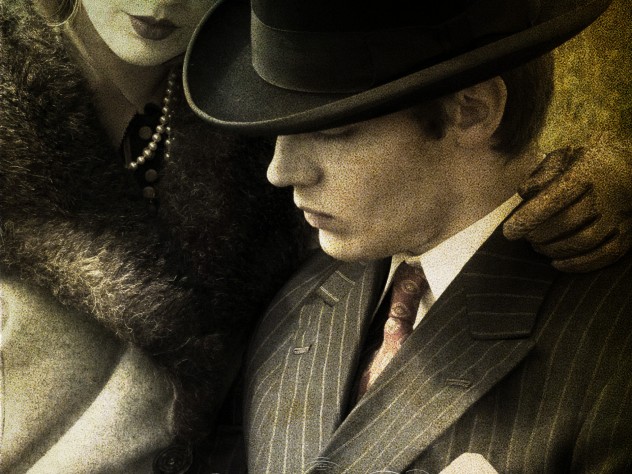
George “Dutch” Anderson and Gerald Chapman became acquainted in Auburn State Prison. Once paroled in 1919, the two men formed one of the earliest Prohibition-Era criminal gangs, specializing in bootlegging, counterfeiting, and robbery. Gerald Chapman was the first criminal to be labeled “Public Enemy Number One,” and Anderson met his end in a dramatic 1925 shootout in which both participants died. Chapman was turned in by an informant in January 1925, and sentenced to death for the killing of a cop. Though authorities had no idea where Anderson was, his involvement was suspected when that informant and his wife turned up dead several months later; in October, his counterfeit currency was traced to Muskegon, Michigan.
Muskegon police officer Charles Hammond confronted Anderson about a counterfeit bill he had passed at a cafe. Not certain that the man he had in his custody was Anderson, Hammond wasn’t prepared when the gun came out in an alley next to city hall. Anderson fired two wild shots, fled for a short distance with the officer pursuing, then managed to hit Hammond in the chest. Hammond proceeded to wrestle the gun from Anderson and shoot him in the heart with it, at which point both men collapsed. Anderson died at the scene; Hammond actually continued on to the police station, turned in Anderson’s gun to his chief, and died in the hospital.
4 John Paul Chase
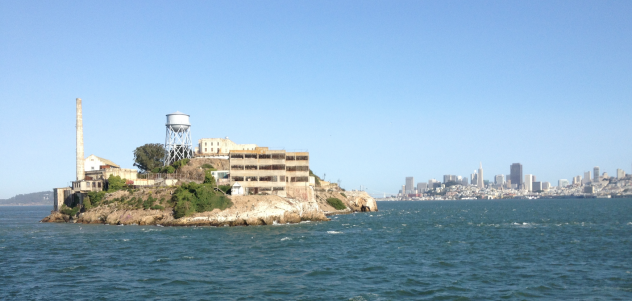
John Paul Chase was, at various points, associated with just about every famous underworld figure of the Depression Era. A member of Alvin Karpis’ and Ma Barker’s gang, associate of George “Baby Face” Nelson, and later member of the Dillinger gang, Chase survived the shootout that killed Nelson to become one of the longest-serving inmates at Alcatraz . After Dillinger and and associate Homer Van Meter were killed by the FBI during the late summer of 1934, Chase and Nelson jumped around the country for a while looking for a safe place. They wouldn’t find any: The FBI was cracking down on gangsters, and the pair were ambushed by federal agents in Illinois in November 1934. Nelson was killed in the ensuing gunfight, but Chase escaped.
This did not sit well with Nelson’s widow, Helen. Shortly after the gun battle, she gave Chase’s name to the feds, who until then had not known who they were looking for. He was arrested in December and sentenced in March 1935 to life imprisonment. He served 31 years before being paroled in 1966. John Paul Chase died of cancer in October 1973.
3 ‘Oklahoma Jack’ Clark
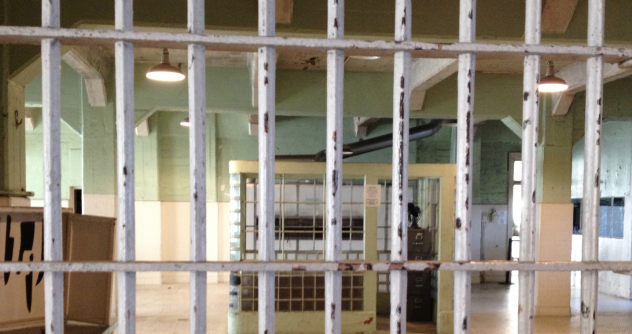
James “Oklahoma Jack” Clark was a member of the Lamm gang (Herman “Baron” Lamm was a pioneering bank robber whose techniques were studied by the likes of the aforementioned Dillinger). Clark was one of two survivors of a massive gun battle following a legendary 1930 bank robbery. By that time, bank holdups were becoming increasingly common, and the newly formed FBI didn’t exactly have a blueprint for dealing with crime of this nature. In Indiana, police had organized loose groups of armed vigilantes to help them spot and thwart suspicious activity. One of these men, a local barber, came to investigate the presence of four strange men at the bank with a shotgun—just as the robbers returned to the getaway car.
The driver’s panicked U-turn swung wide and blew one of the tires, leading to an outrageous string of automotive bad luck: The next car they grabbed had a governor installed and chugged along at a fraction of its normal maximum speed. So they ditched it for a truck with a radiator that was dry as a bone—it soon began blowing steam and overheating. So they jacked yet another car—which only had one gallon of gas in the tank. It was not long thereafter that a couple hundred heavily armed police and vigilantes showed up, and an extremely one-sided firefight ensued. Clark and fellow gang member Walter Dietrich surrendered, and Clark spent the rest of his life in prison.
2 Adam Richetti
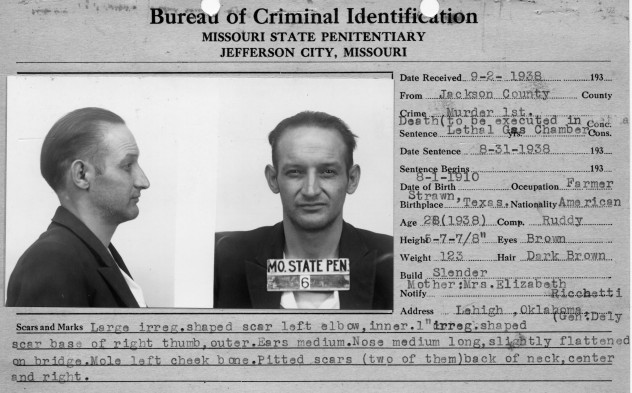
The Kansas City Massacre was one of the most infamous shootouts in history. It happened at a Union train station in Missouri during a botched attempt to free Frank “Jelly” Nash from the custody of federal agents who were transporting him to prison early on the morning of June 17, 1933. According to the FBI, a trio of Nash’s gangster buddies (Richard Galatas, Herbert Farmer, Louis Stacci, and Frank B. Mulloy) had gotten word of his capture. They tasked notorious outlaw Vernon Miller with recruiting hired guns to try to free Nash, and he was able to secure Charles Arthur “Pretty Boy” Floyd and his partner, Adam Richetti, a prolific bank robber and former partner of Aussie Elliott who had been active for about three years. On the way, however, they hit a snag when a local sheriff recognized Richetti as he and Floyd waited around a garage for their car to be repaired. After tying everyone up, the two left and made it to Kansas City before dawn.
Finally, in the wee hours of July 17, they arrived at Miller’s home and were briefed on the plan to free Nash. By most accounts it was Vernon Miller, Adam Richetti, and “Pretty Boy” Floyd who drove to the Union Railway Station later that morning in a plain Chevrolet sedan, armed to the teeth. Notably, this official FBI account has not been conclusively proven: Some eyewitness accounts put other men at the scene, and all accounts were inconsistent. After Floyd was killed by the FBI in 1934, Richetti was arrested, tried, and executed for his role in the Massacre, though the only man positively identified as one of the shooters was Miller.
1 Vernon Miller

Vernon Miller was a one-time bootlegger and bank robber, once a partner of Frank Nash, who had settled into a career of murder-for-hire by 1933. Dangerous and unstable, he was known to use deadly force against law enforcement and associates alike. Through one of his Chicago mob connections, he was hired to spring Frank Nash from federal custody.
When the train arrived carrying Nash and three federal agents, they were met by two more agents and two officers from the Kansas City police department. These seven officers, armed with shotguns and pistols, escorted Frank Nash through Union Station to a waiting car after surveying the area to make sure nothing was amiss. As they were situating themselves (three agents in the back, Nash in the passenger seat, another agent about to get behind the wheel) there came a storm of gunfire from all directions. One of the surviving agents noted that at least one the assailants had a machine gun. Two of the agents in the back seat fell forward and were able to avoid being seriously injured, but the other was killed, as were all three law enforcement officials (still outside their vehicles) and Frank Nash (rendering the whole thing completely pointless).
The FBI contends that beer bottles found in Miller’s home yielded Richetti’s fingerprints, thus linking him to the crime; his fate was mentioned earlier. As for Miller, he fled to the East Coast, where he was later strangled and beaten to death with a hammer by an assailant who has never been identified.
